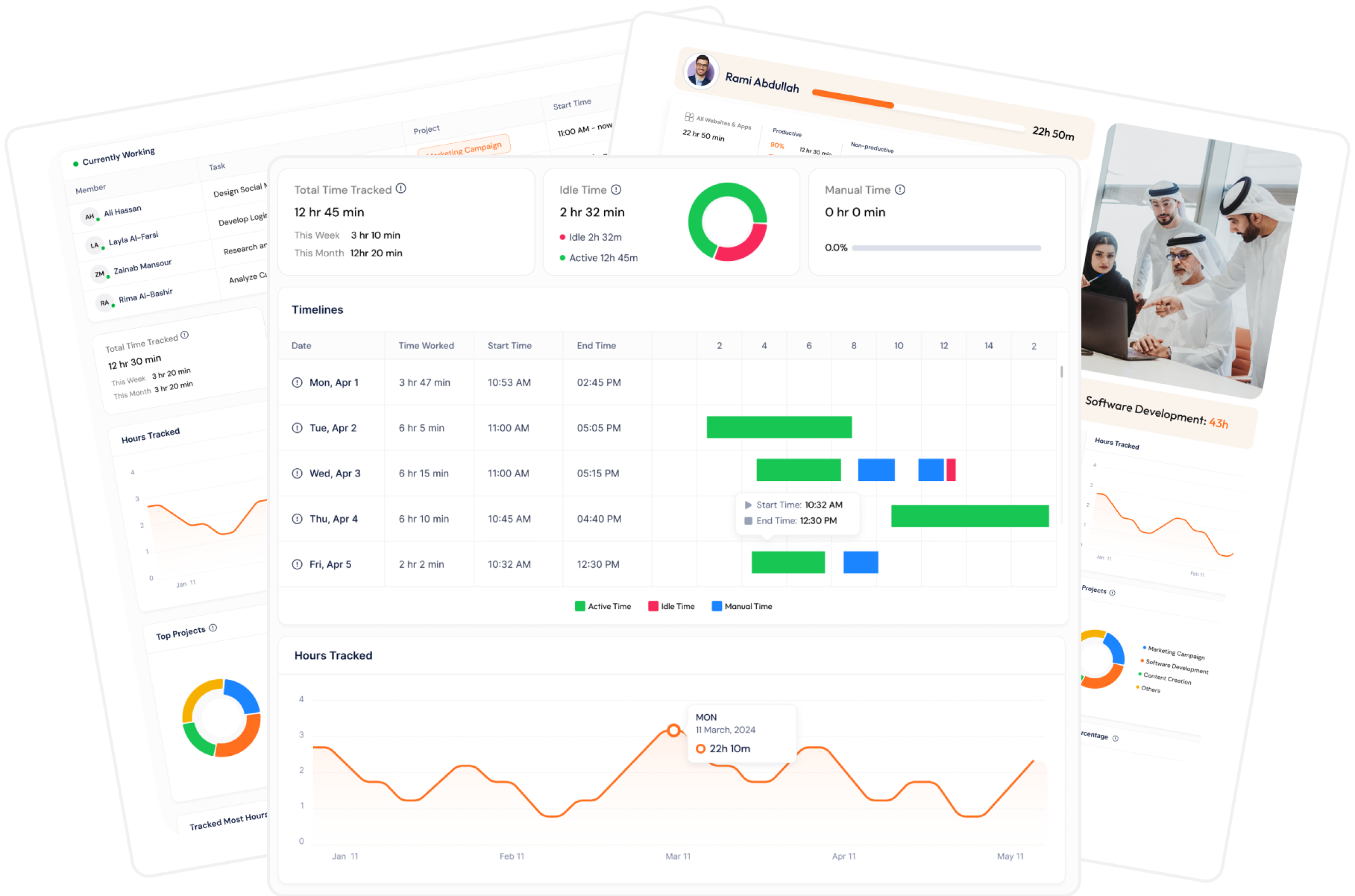
The Role of Time Tracking in Enhancing Employee Performance
Introduction
In today’s fast-paced work environment, time management isn’t just a productivity hack—it’s a performance multiplier. Effective time tracking plays a vital role in helping companies and employees understand where their efforts are going, identify inefficiencies, and optimize their workflows. When implemented properly, time tracking can become a powerful tool to enhance performance across every level of your organization.
Benefits of Time Tracking
Identifying Time-Consuming Tasks
One of the core advantages of time tracking is its ability to reveal what’s really eating up your team’s hours. Whether it’s unnecessary meetings, manual data entry, or context-switching between tools, time tracking gives you the visibility to spot what’s slowing your people down.
Improving Project Estimations
Accurate project estimations rely on historical data. By consistently tracking time spent on similar tasks or projects, you gain a reliable benchmark to forecast future timelines—and actually hit your deadlines.
Enhancing Accountability
When team members know their time is being tracked—not in a micromanaging way, but as a form of feedback—they tend to stay more focused. Time tracking increases ownership and transparency without the need for top-down pressure.
Implementing Time Tracking
Choosing the Right Tool
To make time tracking work, it’s crucial to choose a tool that’s easy to use, reliable, and integrates well with your workflow. ClockBoost is a great example—offering a seamless experience across desktop, web, and browser extensions. It supports real-time tracking, team dashboards, productivity insights, and more.
Training Employees
Rolling out a time tracking tool isn’t just a tech implementation—it’s a change in mindset. Ensure your team understands the purpose behind it (improvement, not surveillance), and provide proper onboarding to get everyone aligned.
Analyzing and Acting on the Data
The real value of time tracking lies in the data it generates. Use it to identify patterns, bottlenecks, and high-performing workflows. Then act on those insights—optimize, delegate, automate, or eliminate tasks where needed.
Conclusion
Effective time tracking is more than just logging hours—it’s about building a smarter, more agile, and high-performing team. By leveraging tools like ClockBoost, you can create a culture of accountability, optimize project workflows, and ultimately, drive business growth. Invest in time tracking not just to measure productivity—but to improve it.


